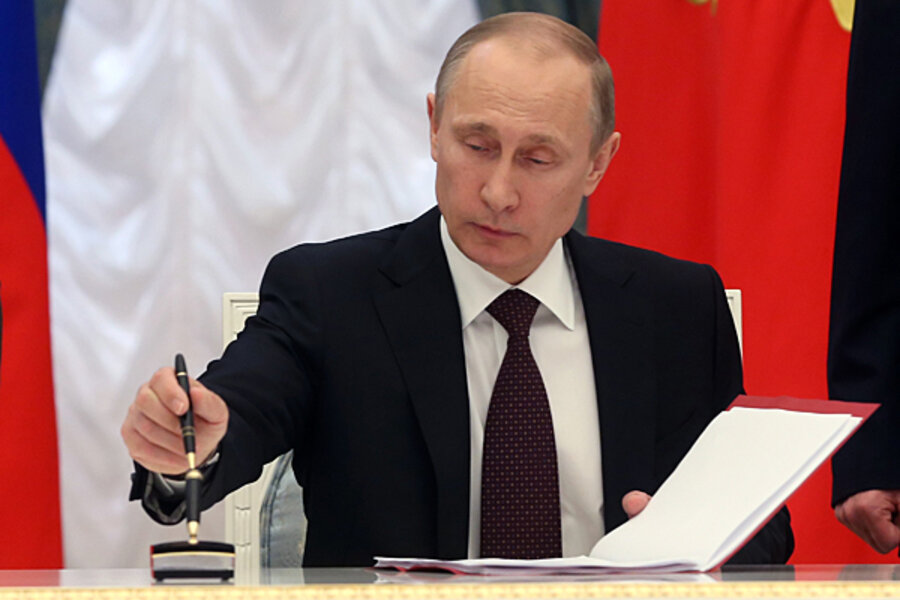With Crimea annexation, Putin expands oil and gas empire
Loading...
When Russia annexed Crimea, it seized not just the land, but also the resource-rich waters that surround it.
Crimea may account for less than 4 percent of Ukraine’s gross domestic product but is vital to developing the substantial Black Sea oil and gas that lies in its watershed. Moscow’s acquisition of the Ukrainian peninsula blocks Kiev’s physical access to those resources and is scaring off private foreign capital that seemed ready to develop them.
If the region is to stay under Russian control, as seems all but assured, Russia’s state-owned oil and gas giants will likely step in to fill the void. That would further expand Moscow’s resource leverage over Europe and again hamper Kiev’s efforts to secure its energy future.
The deep-water natural gas reserves in the portion of the Black Sea shelf that still formally belongs to Ukraine are estimated at between 4 trillion and 13 trillion cubic meters, according to Ukrainian government figures. With an investment of between $8 billion and $9 billion, production could reach a level of about 9.7 billion cubic meters (bcm) per year by 2030. Those energy riches, though, changed hands de facto when the rest of Crimea did.
Ukraine – which currently consumes about 55 bcm a year, of which roughly 50 percent is imported from Russia – also has between 1.2 trillion and 3.5 trillion cubic meters of onshore conventional gas reserves. Kiev would still be able to slash its reliance on Russian supply by developing its untapped onshore conventional reserves, but the loss of offshore reserves is, nonetheless, a formidable blow in terms of energy security and a substantial loos of potential revenue.
For now, Western interest in offshore Ukraine – and potentially other parts of the Black Sea – is in a holding pattern ... For the rest of the story, continue reading at our new business publication Monitor Global Outlook.






